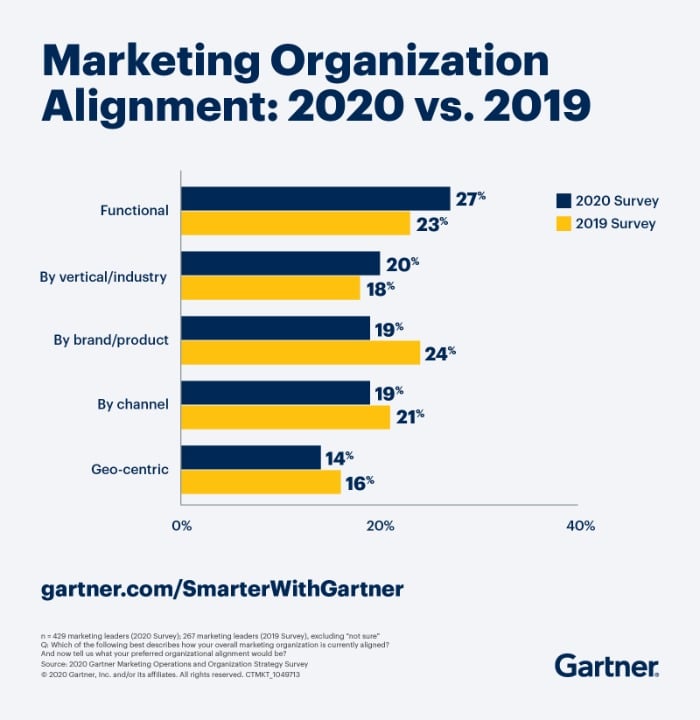5 Types of Marketing Organization Structures That Will Fuel Your Growth

By Neil Patel
Successful marketing requires a focused strategy and an outstanding team to bring it all together. However, introducing an effective marketing organization structure can take your business to the next level.
With a solid marketing structure in place, your staff knows exactly what is expected of them. With everyone clear on their jobs and their roles in the company’s success, everything operates more smoothly, and it enables your team to work in unison.
However, not all business models are suitable for all companies. If you want to choose the right marketing organization structure, you need to know which type is best for your business.
How do you choose? Let’s talk about the five most common structures, how they work, and the pros and cons of each one.
What Is a Marketing Organizational Structure?
A marketing organizational structure is the setup of a company’s marketing department. It determines the leadership chain and sets out your business’s goals. It also defines employee roles, establishes employee structure, and organizes teams.
Organizational structures in marketing come in many shapes and sizes, but they all serve the same purpose: to create a system that enables the marketing department to function effectively and achieve its goals.
As Gartner’s Marketing Organization Survey 2020 notes, marketers are continuing to strive to create “more effective and responsive organizations” while minimizing disruption.
According to their research, 27 percent of marketers use functional marketing organization structures in their business.

Why a Marketing Organizational Structure Is Important
Setting up a structure benefits your company in multiple ways, empowering employers, allowing better focus, and enabling agility. Let’s look at this in more detail.
Improves Agility
Today’s businesses need to be agile. Agility is essential in fast-changing sectors, allowing your team to enhance efficiency, prioritize workloads, create relevant products, and allocate budgets more effectively. It also makes it easier to shift when technology, trends, or Google’s Algorithms change.
Agile marketing is increasing in areas like content creation and creative services, with 77 percent of businesses taking this approach.
Empowers Your Employees
If you want your business to succeed, you need the best people for the job. A functional marketing organization structure groups your team based on skills, ensuring you have the right person for each job and they have the support they need.
When employees are in positions that fit their skills and the support they need, they are empowered to succeed—which improves loyalty and your bottom line.
Improve Employee Focus
When employees have clear goals, it’s easier for them to concentrate on their tasks. When every employee on the marketing team is working with the same focus, it streamlines the process and enables collaboration.
Additionally, focus keeps team members engaged. This is crucial because, according to Gallup, engagement increases productivity by 18 percent. Further, it increases profitability by 23 percent, while decreasing absenteeism by …read more
Source:: Kiss Metrics Blog









